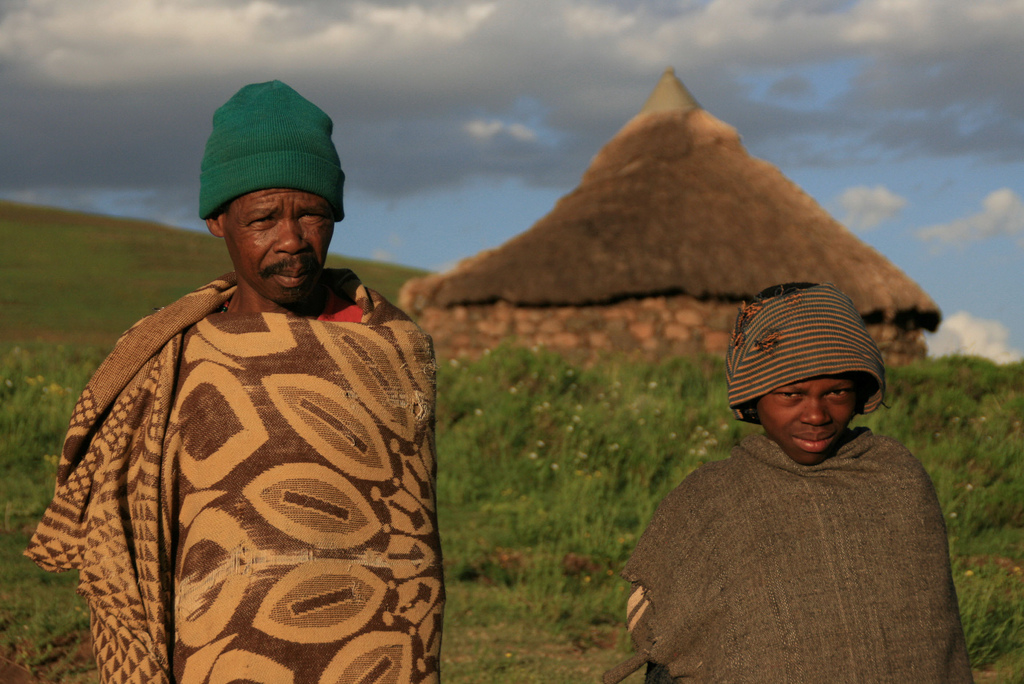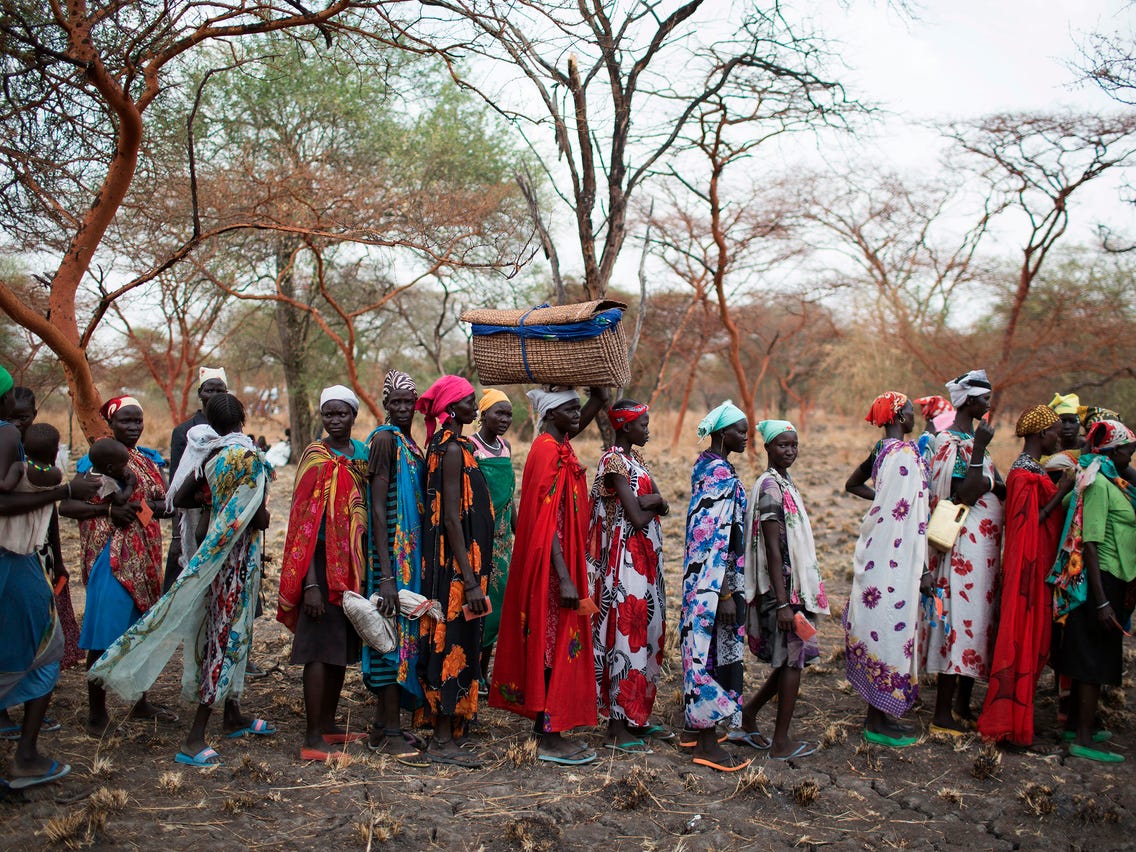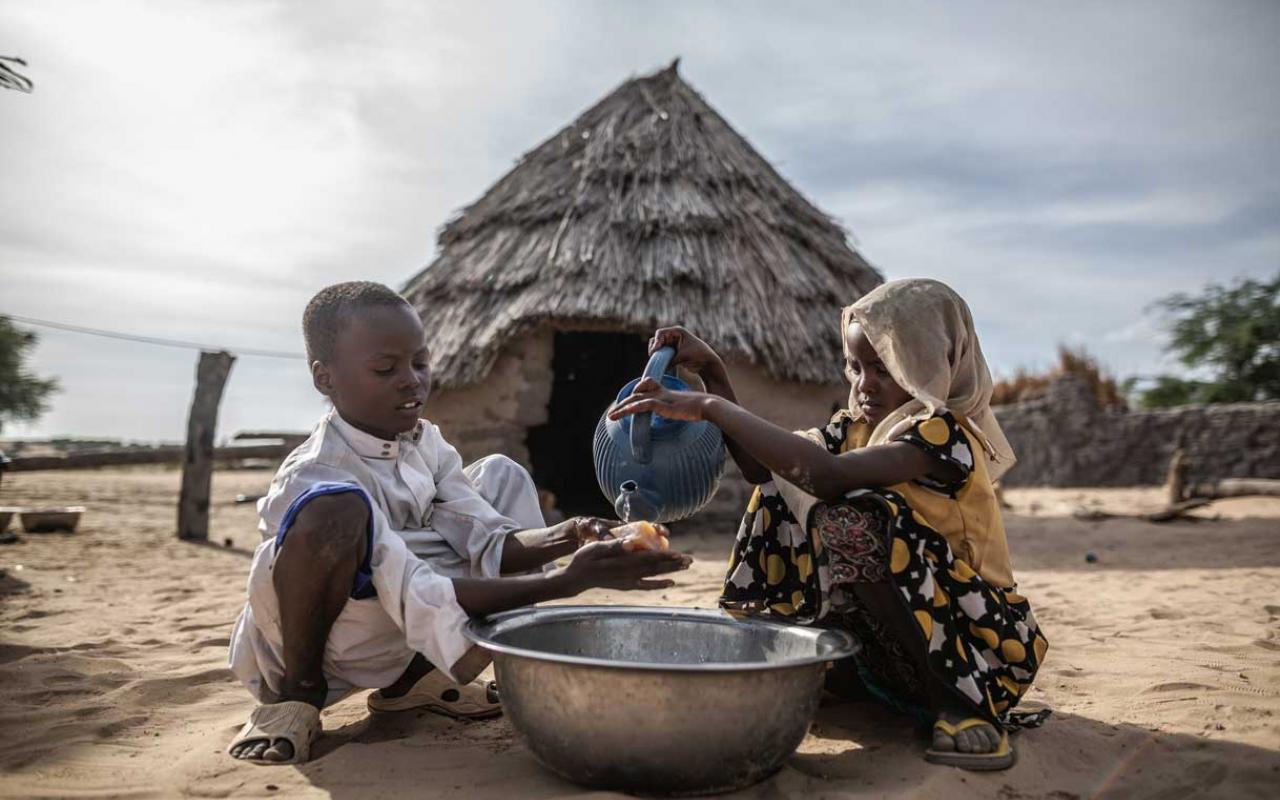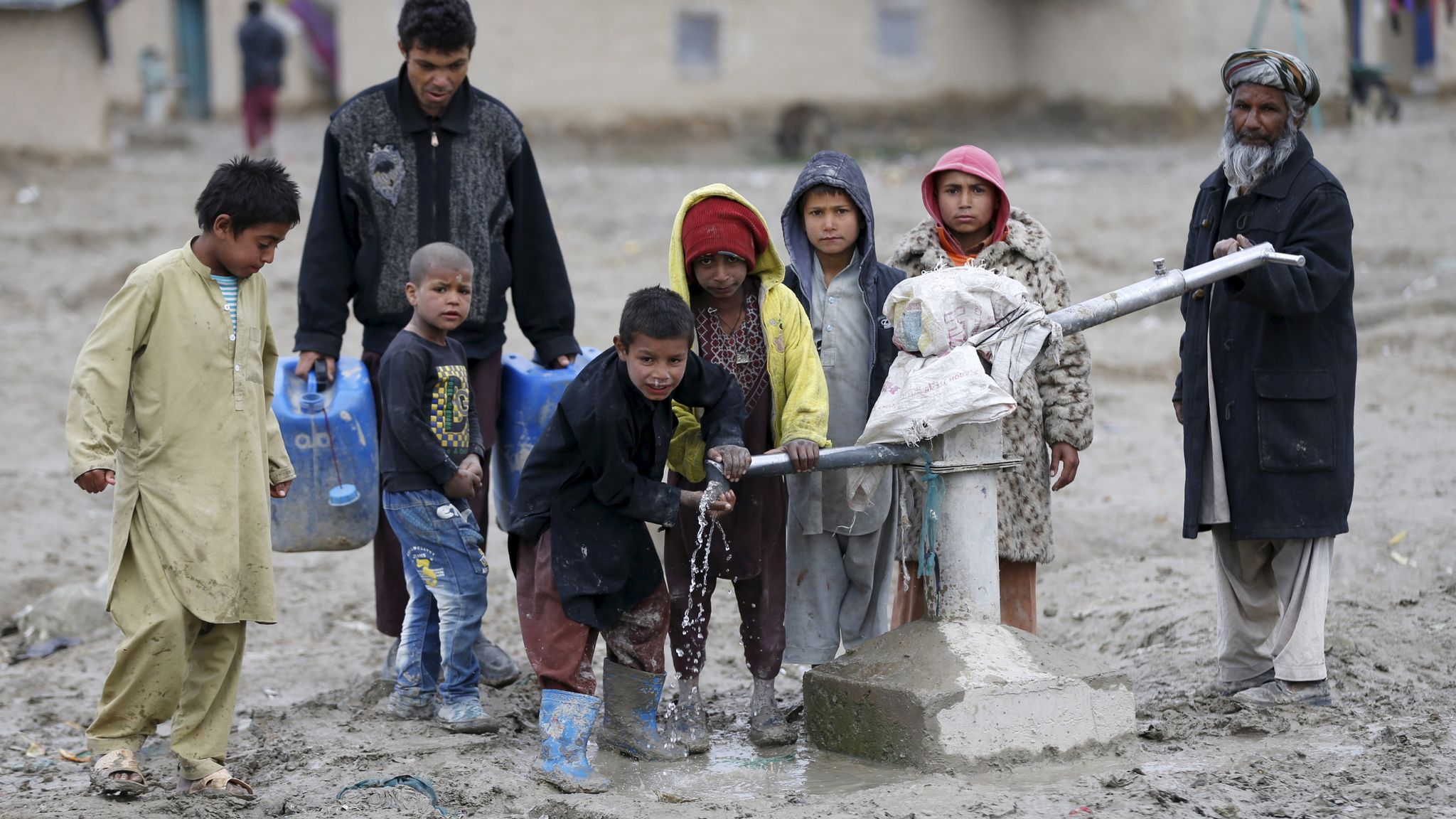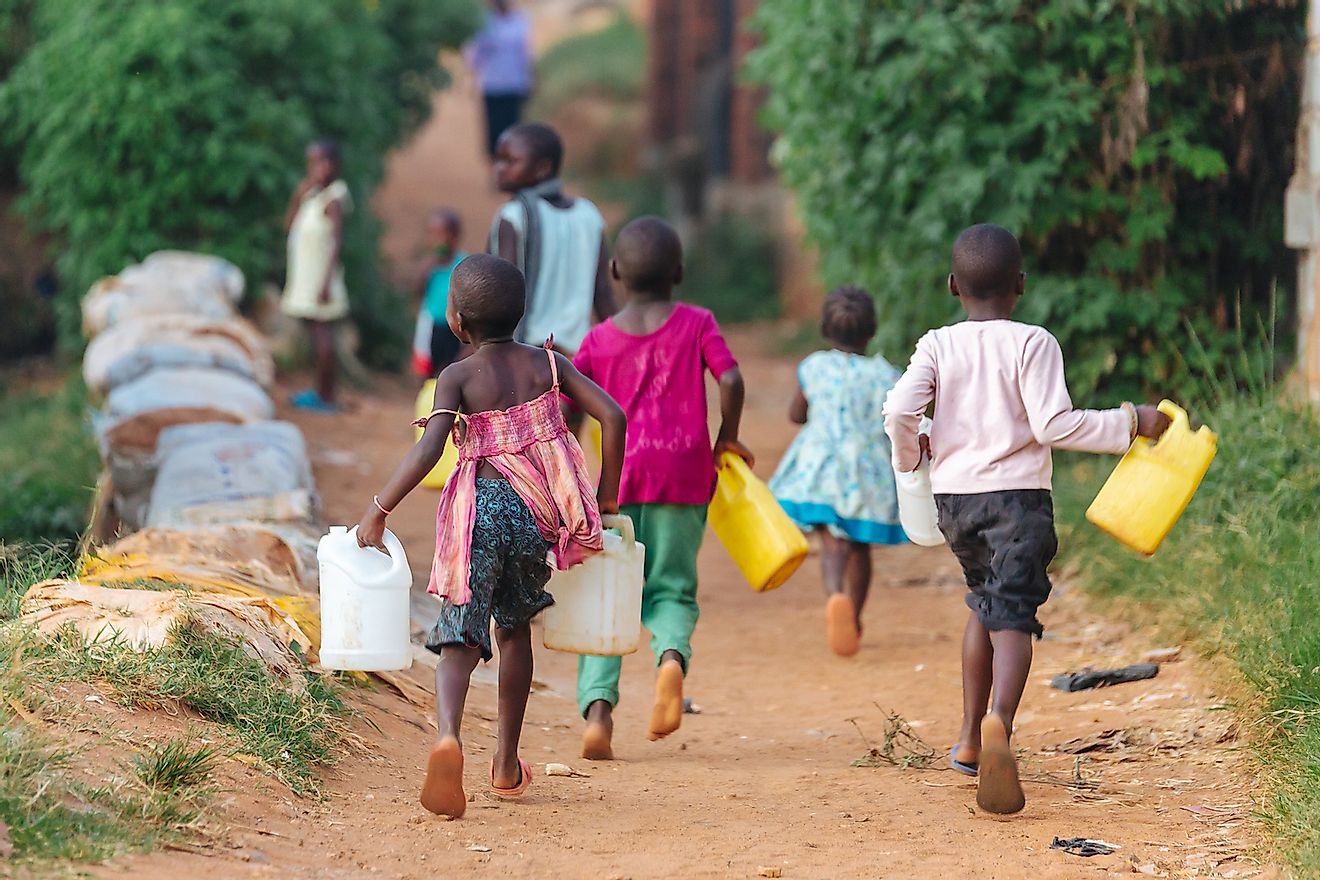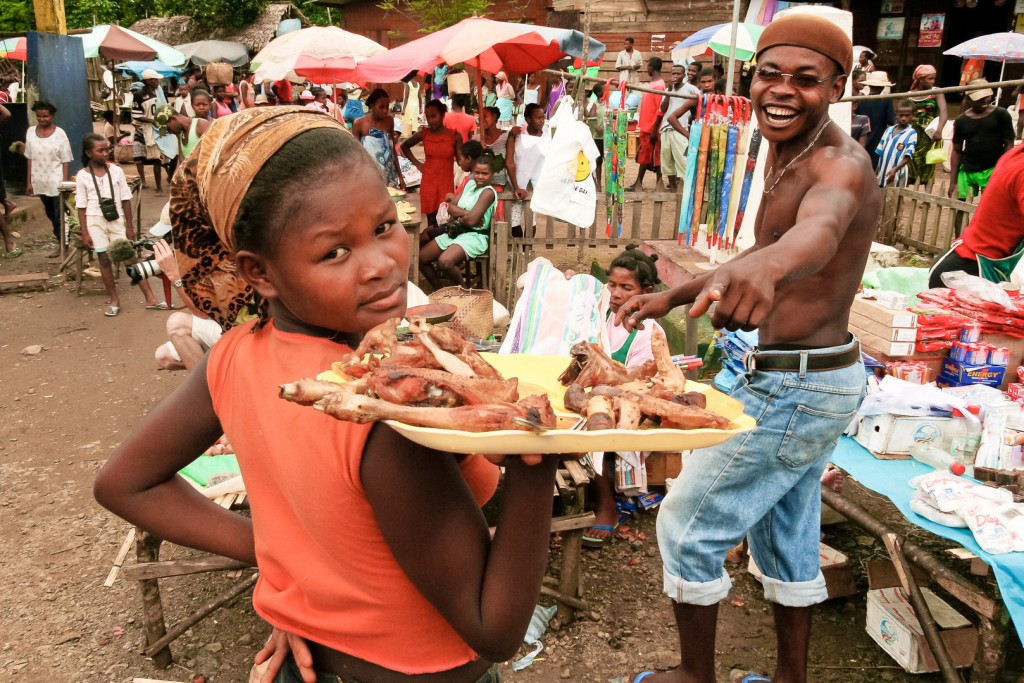The Top 30 Poorest Country in The World in 2022
– Poorest Country in The World –
Looking for the poorest country in the world. The Civil conflicts, and ethnic and sectarian turmoil plagued the poorest countries, and then COVID-19 arrived to exacerbate the issue.
As glamorous and aspirational as it can be to study the world’s richest countries, it’s equally important to be aware of the countries on the other end of the wealth spectrum.
Helping poorer countries improve their financial standings is one of the primary methods organizations such as the United Nations employ to improve the overall quality of life for those countries’ citizens.
Many factors contribute to a nation’s wealth, including its natural resources, educational system, political stability, and national debt.
Most—though not all—of the world’s poorest countries also rank among the world’s least developed nations (sometimes known less kindly as underdeveloped countries or by the less precise and even less kind third world nations.
List of 30 Poorest Country in The World
The world’s poorest countries are classified as low-income economies in the four-tiered World Bank ranking system.
This ranking is based on each country’s gross national income (GNI) per capita, which is a measure of the country’s total income divided by its population. GNI is very similar to Gross Domestic Product (GDP) per capita.
Both metrics measure the dollar value of all goods and services produced in a given country, but GNI also includes income earned via international sources (such as foreign investments or real estate holdings).
For that reason, GNI is considered a slightly more accurate measure of a country’s economic health.
GNI is typically expressed one of two ways. The first is in US dollars, calculated using a technique called the Atlas method to compare each nation’s currency.
The second is in “purchasing power parity (PPP) international dollars”, a hypothetical currency tied to a the value of the US dollar in a given year.
Under the World Bank system, low-income countries are nations that have a GNI (adjusted to current US dollars) of less than $1,046 as of July 01, 2021.
30. Lesotho
It is officially the Kingdom of Lesotho, is a landlocked country and enclave—entirely surrounded by the Republic of South Africa.
It is just over 30,000 km2 (11,583 sq mi) in size with an estimated population of almost 1,800,000. Its capital and largest city is Maseru. Lesotho is the southernmost landlocked country in the world.
It is a member of the Commonwealth of Nations.
The name “Lesotho” translates roughly into “the land of the people who speak Sesotho”.[ About 40% of the population live below the international poverty line of US$1.25 a day.
29. Colombia
Colombia is a standing middle power[14] with the fourth largest economy in Latin America and a major impact of poverty.
It is very ethnically diverse, and the interaction between descendants of the original native inhabitants, Spanish colonists, Africans brought as slaves and twentieth-century immigrants from Europe and the Middle East has produced a rich cultural heritage.
This has also been influenced by Colombia’s varied geography.
The majority of the urban centres are located in the highlands of the Andeages mountains, but Colombian territory also encompasses Amazon rainforest, tropical grassland and both Caribbean and Pacific coastlines.
Ecologically, Colombia is one of the world’s 18 megadiverse countries (the most biodiverse per unit area).
28. South Africa
The Republic of South Africa is a country located at the southern tip of Africa, with a 2,798 kilometres (1,739 mi) coastline on the Atlantic and Indian Oceans.
To the north lie Namibia, Botswana and Zimbabwe; to the east are Mozambique and Swaziland; while Lesotho is an independent country wholly surrounded by South African territory.
Modern humans have inhabited Southern Africa for more than 100,000 years. At the time of European contact, the dominant indigenous peoples were tribes who had migrated from other parts of Africa about one thousand years before.
From the 4th-5th century CE, Bantu-speaking tribes had steadily moved south, where they displaced, conquered and assimilated original Khoikhoi and San peoples of southern Africa.
At the time of European contact, the two major groups were the Xhosa and Zulu peoples.
27. Eritrea
Officially the State of Eritrea, is a country in the Horn of Africa. It is bordered by Sudan in the west, Ethiopia in the south, and Djibouti in the southeast.
The east and northeast of the country have an extensive coastline on the Red Sea, directly across from Saudi Arabia and Yemen.
The Dahlak Archipelago and several of the Hanish Islands are part of Eritrea. Its size is just under 118,000 km2 (45,560 sq mi) with an estimated population of 5 million. The capital is Asmara.
READ ALSO!!!
- Mechanical Engineering Degree
- Apple Tech Remote Job Opportunities
- Several Ways to Detect Counterfeit Money
- Premiere Urgence Internationale Recruitment Portal
- 70 Most High Demand Jobs in the US 2022 Update
26. Madagascar
Madagascar, or Republic of Madagascar (older name Malagasy Republic, French: République malgache), is an island nation in the Indian Ocean off the southeastern coast of Africa.
The main island, also called Madagascar, is the fourth-largest island in the world, and is home to 5% of the world’s plant and animal species, of which more than 80% are endemic to Madagascar.
They include the lemur infraorder of primates, the carnivorous fossa, three bird families and six baobab species.
Two thirds of the population live below the international poverty line of US$1.25 a day.[4]
25. Benin
• GNI per capita: $2,055
• 2017 GDP: $23.1 billion
• Population: 11.2 million
• Life expectancy at birth: 61.2 years
Benin, a West African country of about 11.2 million people, is one of only 25 countries in the world with a GNI per capita below $2,100.
About half of the population lives on less than $1.90 a day, and over three-quarters live on $3.20 or less a day.
As is the case in many poor countries, health outcomes in Benin lag behind much of the world. Life expectancy at birth in the country is just 61 years, about 11 years shy of the global average.
The low life expectancy is partially the result of a high infant mortality rate.
There are 98 infant deaths for every 1,000 live births per year in Benin, compared to 39 per 1,000 globally.
24. Guinea
• GNI per capita: $2,031
• 2017 GDP: $26.0 billion
• Population: 12.7 million
• Life expectancy at birth: 60.6 years
Despite a wealth of valuable minerals like diamonds, gold, and aluminum ore, Guinea ranks as one of the poorest countries in the world.
Only about a third of residents have access to electricity, and the country’s 32% literacy rate is among the lowest in the world. Like many poor countries, Guinea has a largely agrarian economy, with farming accounting for about two-thirds of total employment.
Like many countries on this list, Guinea has had a history of political instability that hampered economic development.
In recent years, after a coup and military rule for two years, Guinea became civilian ruled again in 2010, only to succumb to a wave of political violence. In 2014, the country was also ravaged by the Ebola outbreak.
23. Zimbabwe
• GNI per capita: $1,990
• 2017 GDP: $36.6 billion
• Population: 16.5 million
• Life expectancy at birth: 61.7 years
A former British territory, Zimbabwe has been an independent nation for less than 40 years. Zimbabwe is one of only 23 countries with a GNI per capita below $2,000.
Low-income countries typically rely heavily on agriculture, and in Zimbabwe, farming accounts for 67% of total employment.
Economic development is hampered by infrastructure limitations – just 38.1% of citizens have access to electricity.
The younger generation in Zimbabwe may be better equipped to foster prosperity in the coming decades as the country’s leaders are investing in education.
Zimbabwe spends the equivalent of 7.5% of its GDP on education, far more than the 4.8% average across all countries with available data.
22. Mali
• GNI per capita: $1,953
• 2017 GDP: $37.4 billion
• Population: 18.5 million
• Life expectancy at birth: 58.5 years
Like many of the poorest countries in the world, Mali’s population is growing rapidly.
The West African country’s annual population growth rate of 3.0% is faster than all but a handful of other countries worldwide. The country is also lacking in basic infrastructure. \Just 35.1% of Mali citizens have access to electricity. \It would take an average of 120 days to bring electricity to those in the country without it, compared to a global average of about 86 days.
The effects of the hardships associated with poverty are evident in the country’s health outcomes. Life expectancy at birth in Mail is just 58.5 years, one of the lowest of any country in the world.
21. Rwanda
• GNI per capita: $1,814
• 2017 GDP: $22.7 billion
• Population: 12.2 million
• Life expectancy at birth: 67.5 years
Rwanda is a landlocked country in east-central Africa.
Its economic development has been hampered by one of the worst genocides in history. In the mid-1990s, an estimated 800,000 Rwandans were killed in less than 100 days for their ethnicity.
Though the country has made a comeback in recent years through coffee and tea production, it ranks among the poorest countries in the world, with a GNI per capita of just $1,814.
Nearly 80% of Rwandans live on less than $3.20 a day, and over half live on less than $1.90.
20. Chad
• GNI per capita: $1,750
• 2017 GDP: $26.3 billion
• Population: 14.9 million
• Life expectancy at birth: 53.2 years
Despite a wealth of valuable resources like gold and oil, Chad is one of the poorest countries in the world.
Tensions between Muslims in the north and Christians in the south have been a drag on development. Government corruption is also hurting economic development and discouraging investment.
Based on over a dozen surveys on perceptions of corruption in the public sector, Transparency International ranks Chad among the most corrupt countries in the world.
Chad’s social and economic challenges have serious consequences for its citizens. Life expectancy in the landlocked country in north-central Africa is just 53.2 years, nearly the lowest of any country in the world.
19. Ethiopia
• GNI per capita: $1,719
• 2017 GDP: $181.6 billion
• Population: 105.0 million
• Life expectancy at birth: 65.9 years
Ethiopia is Africa’s oldest independent nation, and having never been colonized, it has not faced the challenges that come with new-found independence that many other countries on this list faced.
However, droughts and civil conflict in the early ’90s have hurt development, and infrastructure in the country is lacking.
Less than half of the population has access to electricity, and there are only about 38 cell-phone subscriptions per 100 people.
Broadband and landline telephone subscriptions are even more rare.
More than one in every four Ehtiopians live on less than $1.90 a day, and 62% live on $3.20 or less a day.
18. Haiti
• GNI per capita: $1,664
• 2017 GDP: $18.2 billion
• Population: 11.0 million
• Life expectancy at birth: 63.6 years
Located on the Caribbean island of Hispaniola, Haiti is one of only a few countries on this list that is not in Africa.
Though the country gained independence from France in the 19th century, it remained in its former colonial ruler’s debt until 1947, paying compensation to former French slave owners.
In recent decades, the country has been slammed by natural disasters like hurricanes and earthquakes and has also suffered from political instability.
Like many poor countries, Haiti is heavily dependent on farming, with agriculture accounting for about half of total employment.
The effects of poverty on the Hatian population are blatant as about 46% of the population is malnourished, and the average life expectancy in the country is just 63.6 years.
17. Uganda
• GNI per capita: $1,658
• 2017 GDP: $72.8 billion
• Population: 42.9 million
• Life expectancy at birth: 60.2 years
Gaining independence from Great Britain in 1962, Uganda fell under the tyrannical rule of Idi Amin from 1971 to 1979.
During that period, the country’s economy nearly collapsed following the expulsion of all Asian people at the direction of Amin.
Additionally, an estimated 300,000 Ugandans were killed under Amin’s regime.
In recent decades, the landlocked African nation has been roiled by a military coup and rebellions headed by the Lord’s Resistance Army.
Today, broad-scale economic development in Uganda is hamstrung in part by infrastructure limitations.
Only about a quarter of the country has access to electricity, and while there are over 58 cell-phone subscriptions per 100 people in the country, fixed telephone lines and broadband are virtually non-existent.
16. Afghanistan
• GNI per capita: $1,647
• 2017 GDP: $63.8 billion
• Population: 35.5 million
• Life expectancy at birth: 64.1 years
With chronic warfare, meaningful economic development in Afghanistan has been effectively impossible in recent decades.
Invaded by the Soviets in 1979, the ensuing war lasted a decade and claimed over a million lives. Following Sept. 11, 2001, the U.S. military has maintained a presence in the country.
And, though NATO ended its combat mission in Afghanistan in 2014, insurgent forces continue to threaten the country’s stability.
Today, the standing government in the landlocked South-Central Asian country ranks among the most corrupt in the world.
The country is heavily dependent on foreign aid, and citizens regularly suffer from shortages of clean water and electricity.
15. Burkina Faso
• GNI per capita: $1,640
• 2017 GDP: $32.6 billion
• Population: 19.2 million
• Life expectancy at birth: 60.8 years
Burkina Faso is a landlocked country in West Africa, and despite significant gold reserves, it is one of the poorest countries in both the region and the world.
Over the nearly 60 years since gaining independence from France, the country has endured regular political upheaval and violence – conditions under which meaningful development is all but impossible.
Currently, over three-quarters of citizens live on less than $3.20 a day.
Several social and infrastructure obstacles stand in the way of economic development today.
For example, only about a third of adults in Burkina Faso are literate, and fewer than 20% of residents have access to electricity.
14. Togo
• GNI per capita: $1,586
• 2017 GDP: $11.8 billion
• Population: 7.8 million
• Life expectancy at birth: 60.5 years
Weathering bouts of political instability since gaining independence from France in 1960, the West African nation of Togo has stabilized in recent years.
The country’s economy growth of 4.4% in 2017 was faster than the 3.2% global average growth, and Togo’s government has invested heavily in infrastructure that will help attract investment and encourage development.
Still, the country remains among the poorest in the world today.
About half of the urban population lives in slums, and nearly half of Togo’s total population lives on less than $1.90 a day.
Life expectancy in the country is just 60.5 years, nearly 12 years below the global average.
READ ALSO!!
- Countries that Mandate Women
- Countries with the Best Education
- African Countries that Speak English
- Cheap Places to Travel
- Cheapest Countries to Live
13. Guinea-Bissau
• GNI per capita: $1,552
• 2017 GDP: $2.9 billion
• Population: 1.9 million
• Life expectancy at birth: 57.8 years
The West African nation of Guinea-Bissau is one of the most corrupt countries in the world. Weak public sector institutions have given way to drug trafficking and illegal logging.
The legal part of the country’s economy is largely agricultural as over two-thirds of total employment is in farming.
Cashews are the country’s main export, accounting for about 80% of total export value in 2017.
Today, only about 15% of the population has access to electricity, and 26% are malnourished.
Guinea-Bissau is one of only a handful of countries worldwide where average life expectancy at birth is under 60 years.
12. Eritrea
• GNI per capita: $1,497
• 2017 GDP: $6.8 billion
• Population: 4.5 million
• Life expectancy at birth: 65.5 years
One of the youngest countries in the world, Eritrea won independence from neighboring Ethiopia in 1993.
The country is highly militarized due in part to more than a decade-long war with Ethiopia that ended in 2018.
In addition to war, the country’s severe drought has hampered economic development, as agriculture accounts for about 63% of employment.
Eritrea drew up a democratic constitution in 1997 but never implemented it.
Today, the single-party state ranks among the most corrupt in the world.
Less than half of Eritrea’s population has access to electricity, and there are only about 14 cell-phone subscriptions per 100 people.
Fixed telephone lines and broadband subscriptions are even more rare.
11. Solomon Islands

NTCHISI, MALAWI – JUNE 30, 2018: Unidentified students study in front of a small school building in a remote village near Ntchisi. Malawi is one of the poorest countries in the world.
• GNI per capita: $1,494
• 2017 GDP: $1.3 billion
• Population: 611,343 million
• Life expectancy at birth: 71.0 years
An island nation in the South Pacific, the Solomon Islands is one of only a few countries on this list not located in Africa.
Civil unrest brought the country to the brink of collapse in the late 1990s and early 2000s.
A multinational peacekeeping group led by Australia remained in the country from 2003 to 2017 and brokered a peace deal between rival islands within the nation.
The county’s economy is largely agricultural, with farming accounting for 61% of employment. Like many other poor countries, less than half of the population of the Solomon Islands has access to electricity.
10. The Gambia
• GNI per capita: $1,471
• 2017 GDP: $3.2 billion
• Population: 2.1 million
• Life expectancy at birth: 61.4 years
Compared to most countries on this list – and most countries in West Africa – The Gambia is relatively stable socially and politically.
Still, it ranks among the poorest countries in the world with a GNI per capita of less than $1,500.
The Gambia has limited natural resources and relies heavily on agriculture, with wood, brazil nuts, and cashews accounting for 80% of its exports in 2017.
Less than half of The Gambia’s population has access to electricity, and over a third of the country’s urban population lives in slums.
9. Sierra Leone
• GNI per capita: $1,348
• 2017 GDP: $10.5 billion
• Population: 7.6 million
• Life expectancy at birth: 52.2 years
Sierra Leone is a resource-rich country in West Africa. It endured a devastating civil war that was fueled by diamonds and valuable minerals trade.
Though the war ended in 2002, it destroyed many of the country’s institutions, and the effects are still being felt.
Today, Sierra Leone’s public sector is perceived to be more corrupt than most other countries.
The problems associated with the lack of economic development are evident.
About a quarter of the country’s population is undernourished, and Sierra Leone’s maternal mortality rate of 1,360 deaths per 100,000 live births is the worst in the world.
The country was also among the hardest hit by the 2014 Ebola outbreak, and at 52.2 years, average life expectancy at birth in Sierra Leone is the worst in the world.
8. Madagascar
• GNI per capita: $1,339
• 2017 GDP: $36.2 billion
• Population: 25.6 million
• Life expectancy at birth: 66.3 years
Madagascar is an island nation located in the Indian Ocean east of the African continent.
The former French colony has been independent since 1960, grappling with political violence and coups in the last several decades.
While the county has a substantial tourism industry, it is heavily dependent on agriculture, with farming accounting for more than two-thirds of total employment.
Living conditions for many in the country demonstrate the hardships associated with poverty.
Over 77% of the country’s urban population lives in slums, and about 43% of residents are undernourished. Life expectancy at birth in Madagascar is just 66.3 years, about six years shy of the global average.
7. Mozambique
• GNI per capita: $1,100
• 2017 GDP: $33.7 billion
• Population: 29.7 million
• Life expectancy at birth: 58.9 years
A former Portuguese colony, Mozambique, a country on the Indian Ocean in southern Africa, became an independent nation in 1975.
Like many former colonial territories, Mozambique struggled in its early years of independence, enduring a civil war that lasted from 1976 to 1992.
Though the country’s economy got a boost in 2011 with the discovery of natural gas, development is still lagging due in part to the over decade-and-a-half of civil war.
A staggering 62.4% of the population lives on $1.90 or less a day, and nearly 82% live on $3.20 a day.
The country is also dealing with a public health crisis, as 12.5% of the population between the ages of 15 and 49 are HIV positive.
Partially as a result, life expectancy in the country is less than 60 years.
6. Liberia
Poorest Country in The World Liberia.
• GNI per capita: $1,078
• 2017 GDP: $5.5 billion
• Population: 4.7 million
• Life expectancy at birth: 63.0 years
Founded partly by freed U.S. slaves, Liberia’s economy was all but destroyed in the 1990s and early 2000s by a civil war that left a quarter of a million dead and thousands more displaced.
Limited economic development in the country has lead to a low standard of living. Less than 20% of the population has access to electricity, and about 39% are undernourished.
The government, which ranks among the most corrupt in the world, spends relatively little on education as a share of GDP, and illiteracy is widespread.
The West African nation is resource rich, however, and gold exports are driving growth. In 2017, gold accounted for 19% of the country’s $1.0 billion in exports.
5. Malawi

Poorest Country in The World Mozambique
• GNI per capita: $1,064
• 2017 GDP: $20.4 billion
• Population: 18.6 million
• Life expectancy at birth: 63.7 years
Malawi is an East African nation that shares a border with Mozambique, another country on this list.
One of the poorest countries in the world, a staggering 70.3% of the population lives on less than $1.90 a day.
Poorer countries are typically heavily dependent on agriculture and subsistence farming, and in Malawi, farming accounts for 71.9% of total employment.
Like other countries in the region, Malawi is struggling to contain the spread of HIV. Currently, about one in every 10 residents between the ages of 15 and 49 are HIV positive.
And, according to the BBC, more than a million children living in the country have been orphaned by the disease.
4. Niger
Poorest Country in The World Niger.
• GNI per capita: $906
• 2017 GDP: $19.9 billion
• Population: 21.5 million
• Life expectancy at birth: 60.4 years
Niger is one of only four countries with a GNI per capita of less than $1,000. Since gaining independence from France in 1960, Niger has been marred by coups and political instability.
As one of the least developed nations in the world, just 16% of the population has access to electricity.
Over 80% of Niger’s population lives in rural areas, and of those who live in urban areas, the vast majority live in slums.
Poverty is widespread in the country as more than three in every four residents live on less than $3.20 a day.
Niger is a resource-rich nation, however, and oil exploration and gold mining are driving economic growth. Niger’s economy grew at a relatively rapid 4.9% pace in 2017.
3. Democratic Republic of the Congo

Poorest Country in The World Congo.
• GNI per capita: $796
• 2017 GDP: $65.7 billion
• Population: 81.3 million
• Life expectancy at birth: 60.0 years
The Democratic Republic of the Congo is a country rich in resources like valuable minerals, like copper, diamonds, and gold.
Rather than being an economic boon, however, control over these resources has helped fuel a civil war that lead to as many as 6 million deaths.
Basic infrastructure is lacking in the country as only about 17% of the population has access to electricity, and there are no fixed telephone lines.
This, in addition to rampant public sector corruption, makes conducting business in the country difficult. As in many poor countries, health outcomes are lagging in the DR Congo.
The country has one of the world’s highest infant mortality rates, and the average life expectancy is just 60 years.
READ ALSO!!!
- KHS Machines Nigeria Limited Recruitment
- International Business Machines Corporation Job
- High-Income Skills to Learn Now and Earn More Money
- International Business Machines Corporation Recruitment
- Modelling a Monetary Valuation Tool for Human Resource
2. Burundi
Poorest Country in The World Burundi.
• GNI per capita: $686
• 2017 GDP: $7.3 billion
• Population: 10.9 million
• Life expectancy at birth: 57.9 years
With a GNI per capita of just $686, Burundi is the second poorest country in both Africa and the world.
The country’s modern history has been stained by a brutal 12-year civil war sparked in 1994 by ethnic tensions between the Tutsi minority and the Hutu majority.
Today, Burundi’s public sector ranks among the most corrupt in the world.
Burundi is also one of the least developed countries in the world. Over 87% of the population lives in rural areas, and fewer than 10% of people in the country have access to electricity.
Though nearly all pregnant women in the country receive prenatal medical care, the country’s maternal mortality rate of 712 deaths per 100,000 live births is among the highest in the world.
1. Central African Republic

Poorest Country in The World Central African Republic.
• GNI per capita: $663
• 2017 GDP: $3.1 billion
• Population: 4.7 million
• Life expectancy at birth: 52.9 years
The GNI per capita of $663 in Central African Republic is the lowest of any country in the world.
Despite a wealth of resources like gold, diamonds, and oil, violence has hindered economic development since the country gained independence from France in 1960.
After a string of coups in the late 20th and early 21st centuries, religious violence between the Muslim minority and Christian majority has plagued the nation since 2012.
Slightly more than half of the CAR population lives in rural areas, but of those who live in cities, more than 90% live in slums.
CAR is the only country with available data where over half of all citizens – 61.8% – are undernourished.
The country also has the third-highest infant mortality rate in the world and one of the lowest average life expectancies, at just 52.9 years.
FAQs About Poorest Country in The World
Below are some of the most frequently asked questions concerning the poorest countries in the World and their possible solutions.
1. Which country is the No 1 poor country?
Niger
2. What is the poor country in the world 2022?
As per the latest World Inequality Report 2022, India is a “poor and very unequal country, with an affluent elite
3. Is Philippines a rich or poor country?
A rich country.
4. Is Thailand a poor country?
Thailand is a relatively wealthy country
5. Is India a poor country 2022?
India is a “poor and very unequal country with a very large share of its population living on less than $3.2 a day.
6. Is China richer than USA?
Yes! China’s wealth jumped to $120 trillion in 2020 from just $7 trillion in 2000
7. Is Sri Lanka a poor country?
Yes! 4.1% of the population lives below the national poverty line in 2016
8. Is South Korea a poor country?
Yes! About half of all citizens over the age of 65 are living in poverty,
9. Is China a poor country?
Yes! About a quarter of China’s population is in poverty,
10. Is Philippines poorer than India?
The Philippines has a GDP per capita of $8,400 as of 2017, while in India, the GDP per capita is $7,200 as of 2017.
I’m sure you have learned one or two from this article. If yes please share it with your friends and loved ones acrose all social media platforms.

